How to Stop Black Walnut Juglone Toxicity | Gardener’s Path
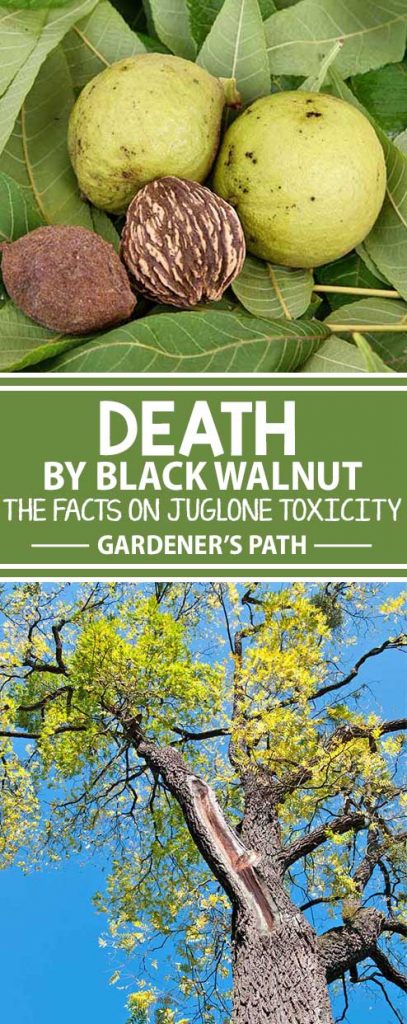
I grew up in a split up of the Nebraska riverbed where black walnut trees (Juglans nigra) were riotous. I enjoyed picking the nut meat from the shells each year, after my grandmother ran the hard nuts over with her car in the drive!
While I dreamt of for each one season's Bounty and Gram's famous disastrous walnut brownies, I didn't know that these bittersweet nuts came with a price.
It wasn't until my husband and I were well into the landscape gardening plans of our possess 4-acre homestead that we started to notice pain. Individual of our newly-planted apple trees weren't doing well.
Patc the cherries, pears, and plums thrived, these poor saplings were wilting, inferior, and sad.
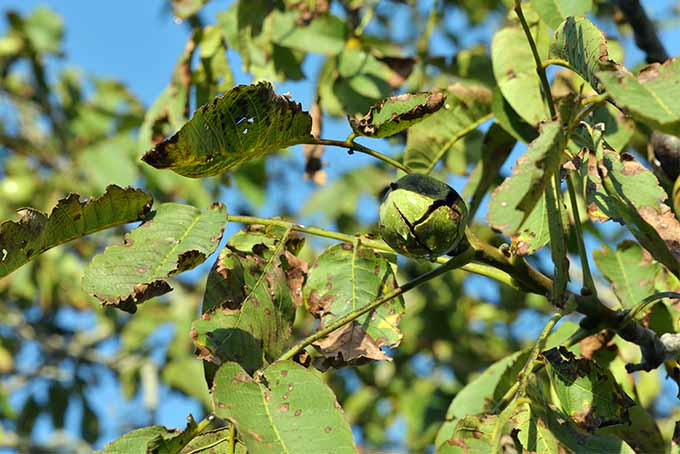
The adjacent dimension had a large walnut tree within 50 feet of our infant orchard. While I had now and again admired the majestic stature of this tree diagram (and on the Q.T. hoped for walnuts to fall on our side of the property line), I didn't realize that my sudden tree deaths were related to its presence.
Though more I've talked to are unaware of its existence, black walnut trees employ a special survival method that can be fatal to surrounding flora.
What Makes Black Walnuts Toxic?
A chemical known arsenic juglone is the culprit here. Black walnuts aren't the only trees that produce this no more-nonsense defense system, composed of 5 hydroxy-1, 4- napthoquinone. Hickories (Carya) and butternuts (Juglans cinereal) are also to blame, merely black walnut tree trees are known for having the highest concentrations of the binge.
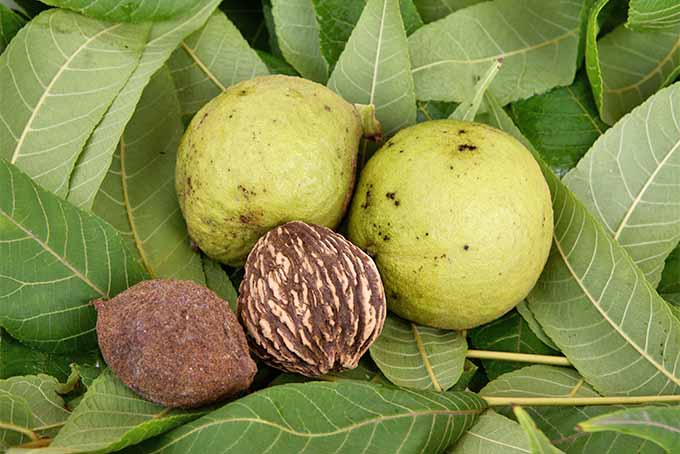
Juglone is released from virtually all part of the tree, although the roots, whacky, and seeds are the virtually toxic. This substance serves a purpose in ensuring the selection of the species, but close plants are often subordinate to unwanted and undesirable consequences.
How Sensitive Plants React
At firstborn peek, the juglone-Mimosa sensitiva may appear to be having other issues.
I know that I originally suspected my apple trees were suffering from other maladies. Cedar cedar-apple rust is very common here, and information technology throne cause the leaves of Malus pumila trees to become mottled and frail.
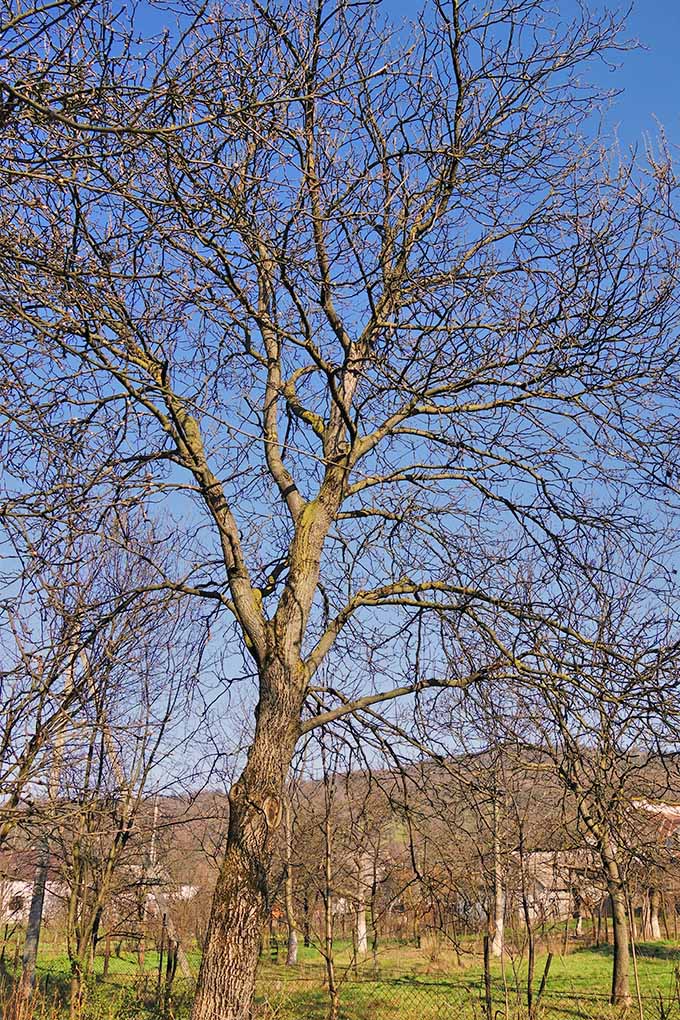
When trees started dying, however, I knew this was a cause for headache. Apples 40 feet away from the neighbour's black walnut were in various stage of expiration. Only the trees growing outside the 60-animal foot marker, on the other side of our property, were thriving.
If you're non familiar with the symptoms of juglone toxicity, you Crataegus laevigata also attribute it to something else.
According to the Morton Botanical garden, your plants, trees, and shrubs may exhibit:
- Wilt
- Yellowing of leaves
- Stunted or slow growth
- Death – sometimes within few months of exposure
There is nobelium cure for juglone poisoning. The best thing you can do is obviate planting near black walnut trees!
Plants with a Chance of Survival
Not all plants are sensitive to the environment warm the tree. But which ones are resistant? If you look at those that grow up wild near volunteer juglone producers, you'll have your resolve!
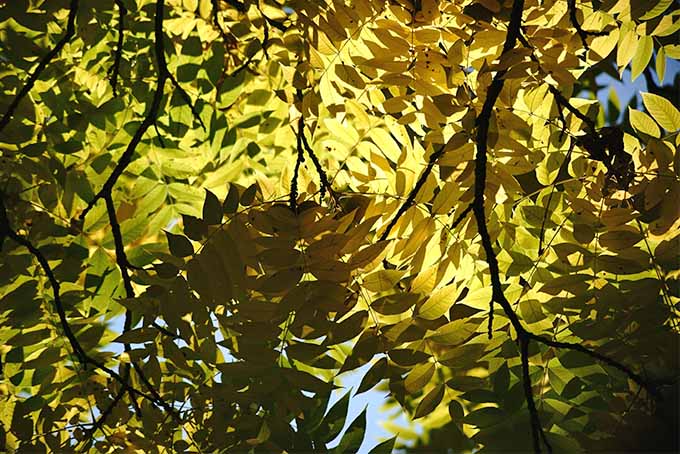
When I look outside at the natural, woodsy areas of my childhood home, I see deal of these successful – often within a invertebrate foot or two of the trees in hand.
Tolerant Trees
Included in the "tolerant" category are the following trees:
- Land Elm
- Black Cherry tree
- Dogwood (includes flowering)
- Eastern Juniperus virginiana
- Hickory
- Locust (most types)
- Maple (demur silver maple)
- Oak
- Ohio Buckeye
- River Birch
- Sycamore
- Virginia Pine
- Yellow Poplar
For the brimfull list, see the Pen Commonwealth Extension's guide.
Tolerant Shrubs and Bushes
These shrubs have been known as resistant to juglone in soil:
- American Holly
- Azalea (most types)
- Evil Bronx cheer
- Currant
- Elderberry
- Juniper
- St. John's Wort
- Snowball Hydrangea
- Sumac
- Witch Hazel
The rest of the list can be accessed via the unite referenced above.
Tolerant Fruits and Vegetables
You're safe to grow these or so your black walnut tree:
- Beans
- Cherries
- Corn
- Melons
- Onions
- Quince
- Root vegetables (beets, carrots, parsnips)
- Squash vine
- Stone fruits (nectarines, peaches, plums)
Tolerant Flowers and Vines
The list of flowering plants that can handle being planted next to black hickory is rather long. Enjoy these flaming plants and vines without worry:
- Sweet balm
- Bleeding Heart
- Daffodil
- Chrysanthemum
- Crocus
- Genus Funk
- Iris
- Jack up-in-the-Pulpit
- Jacob's Ladder
- Helianthus tuberosus
- Dear's Ear
- Morning Glory
- Pansy
- Scotch marigold
- Purple Coneflower
- Helianthus
- Tuberose
- Tulip
- Virginia Crawler
- Wild Grape
- Violet
- Yarrow
- Old maid flower
Plus, there are dozens of others listed by the Penn Country Extension.
Aid for Set up Gardens and Orchards
So, what if you are in the same billet as I was? What if you have established gardens or orchards, and cannot move the walnut or the affected plants? While success rates in mitigating the damage caused by juglone are underslung, there are some things you can try on.
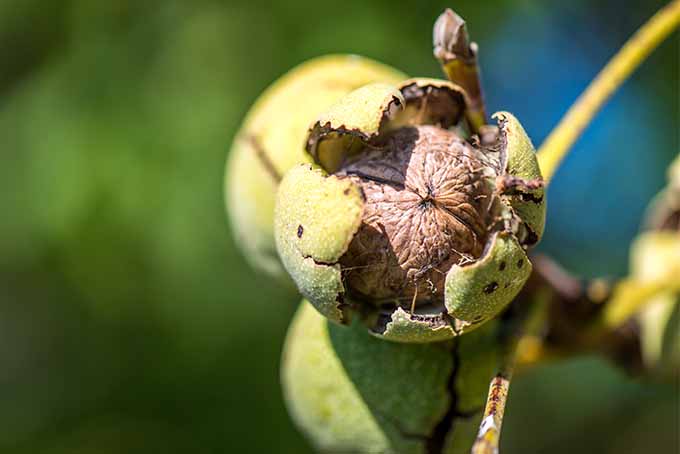
Beginning by ensuring that the seeds, leaves, and nuts of the walnut do non inherit door-to-door link with your sensitive plants.
This may mean installing a protective balcony, fence, or other physical barrier that allows for sun and water to come direct – just not toxic shoetree droppings.
In our vitrine, dame netting did keep approximately of the larger debris that fell from the tree away from plants that were to a fault fragile to be moved right away. If your plants are development in soil directly above or near the roots of a walnut tree tree, you hind end try a raised bed arrangement.
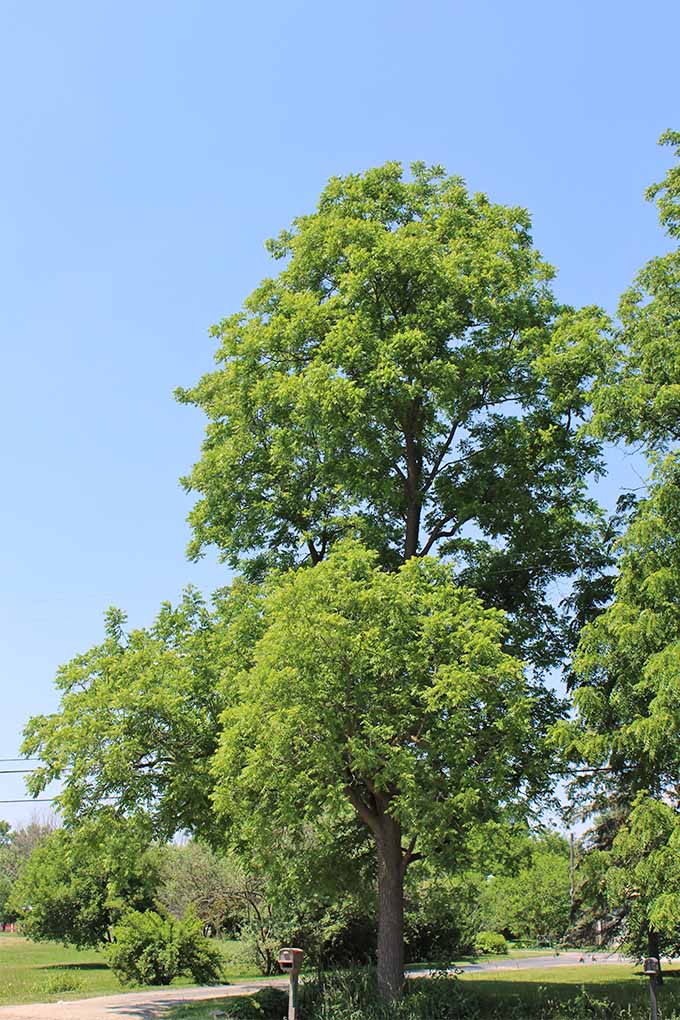
While this South Korean won't work for trees or many shrubs, flowers and veggies can be insert a box or container with soil taken from elsewhere. Assuming in that location is a protective barrier from the soil placed underneath (nontoxic landscape cloth should form), you can keep your soil toxin-free.
One final examination slant is to dungeon soil well-drained and adequately watered. Flushing the toxins out of the soil can dilute their personal effects over time. But this is non a 100% guaranteed solution. The second-best plan is to keep plants outside of the 50-foot radius that is known to be inexpedient to them.
It's also very important that you know where your fertilizer, compost, and mulch come from. Anything that may contain black walnut tree matter poses a risk.
Why Walnuts?
In light of all of this fuss, it May seem that IT is just simpler to make sure you wear't have any of these trees on your property.
I strongly disagree with this sentiment. I grew risen with these majestic trees providing wind tribute, shade, and tasty nuts every year.
They have a long history of affecting the environment in a positive way, and I believe they should be accommodated, if possible.
But then, not everyone has the space to countenance for such a quicksilver corner.

If your lot is particularly small, and you do decide that the tree has to go, be mindful of the roots. They can detain in the soil for years, continually cathartic juglone into the encompassing area until they at length wholly their decline process. Ridding yourself of the uppercase walnut tree May non be the total solution you were looking for!
Do you have one of these trees in your pace or on your homestead? We'd love to hear near what you've done to create an ecosystem where both tree and garden can coexist.
Also, am I the solely same with fond memories of shelling the hulls in the driveway? Share your Juglans nigra memories in the comments.
© Ask the Experts, LLC. ALL RIGHTS RESERVED. See our TOS for more details. Uncredited photos: Shutterstock.
https://gardenerspath.com/plants/landscape-trees/black-walnut-juglone-toxicity/
Source: https://gardenerspath.com/plants/landscape-trees/black-walnut-juglone-toxicity/
0 Response to "How to Stop Black Walnut Juglone Toxicity | Gardener’s Path"
Post a Comment